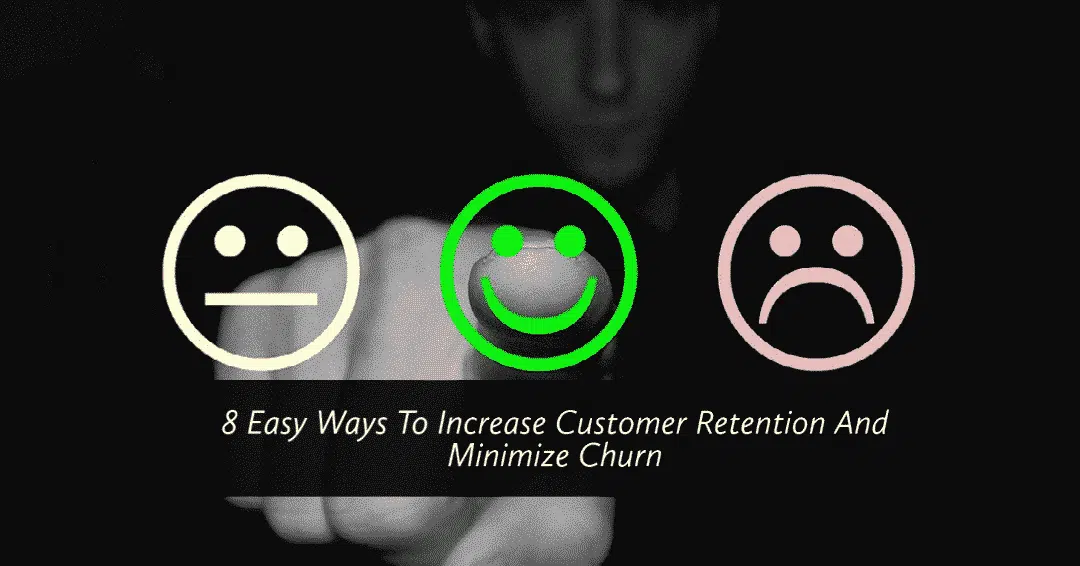For any small business owner, the growth of their business is a huge deal. It ensures their business’ longevity, particularly if they’re in an industry that is already saturated.
Consistent growth over the years is a necessity. Otherwise, you will have to shut down your business as you will be unable to deal with the changes in the target market.
This isn’t a problem for just small businesses; even large businesses can hit a wall if they’re not careful.
Curiously, the practice of growth hacking has been around for longer than the term has been. Terminologies aside, many businesses relied on growth hacking to expand their business.
The proof here is in the pudding, as the fact that growth hacking has become an exceedingly popular business methodology.
What Is Growth Hacking?
In essence, growth hacking is very similar to marketing, but it does differ from traditional marketing practices. In many cases, it is a digitalized version of tracking growth and exploring new viable channels where the business can experience significant growth.
In this light, it shares more similarities with digital marketing practices, due to a large number of analytic data that it provides as tangible proof of growth.
Further comparisons have also shown that growth hacking is better suited for the newer marketplace as compared to the traditional one.
Moreover, it is easier to implement in new businesses, including startups, small businesses, and online businesses as they have more room to grow.
For a larger business, implementing growth hacking techniques could mean that they have to do a complete upheaval of old practices.
Another thing to note here is that growth hacking and measuring software and practices have been refined over the years, and provide more tangible feedback and tracking data today.
This ensures that anyone who wants to use it can do so with ease.
Yet, there have been some who state that growth hacking is not just a set of tools, it is the person’s mindset that will also make a tangible difference in the overall results that a person garners from it.
The Birth of the Growth Hacker
When you’re considering growth hacking, you need to find a growth hacker. Now, you can easily find a lot of growth hackers in the marketplace, but the first growth hacker and the term “Growth Hacking” was coined in 2010.
Sean Ellis, at that time, came up with the term when he realized that the skill set that a growth hacker possesses differs significantly from the skill set of a marketer.
While there are similarities, a growth hacker is someone who works on a micro-level, whereas a marketer has a broader outlook. For many small businesses, this focus on the micro-level is the factor that allows them to grow.
Moreover, while this difference might not appear like a huge one, it is the one that can make or break your business.
A growth hacker is one who has a natural urge and tendency to achieve growth. All their strategies, data, and other decisions are motivated by one single result; they want to see the business grow.
While traditional marketers are also interested in growth, their outlook is more different. They are more focused on maximizing profits and creating a healthy balance of cash flow as well as demand and supply by improving sales of the products.
For them, the profits are the main result, and if growth happens, that’s a positive outcome from the high volume of sales.
A growth hacker, on the other hand, is someone whose main focus remains the overall growth of the business.
How Does It Help Small Businesses?
Despite its popularity, most businesses shy away from it because their budgets are usually limited. However, this is one of the main reasons why growth hacking is better suited for small businesses.
A growth hacker is someone who leverages his/her creativity and innovation to produce the desired outcome with limited resources.
Growth hacking involves thinking out of the box and having a sense of exploration.
A good growth hacker can ensure that a business experiences maximum growth, even with the array of limited resources available.
They also need to have a strong sense of trying new options in a manner that minimizes risk. This can be the primary factor that helps make or break a business.
Given this aspect, small businesses stand to benefit the most since they can ensure that they experience consistent growth, even when their profits are low.
Breaking even can mean that the business still has the resources needed to ensure that they keep investing in growth hacking.
Growth Hacking – Case Studies
If you’re new to growth hacking, the explanations given above might be confusing to you. It is one thing to learn something in a theoretical manner but then to apply it is something else. To get a better idea of how good growth hacking can be for your business, you can just take a look at some of the businesses that have succeeded with the help of good growth hacking practices.
Dropbox – New Product
We can’t start off without mentioning Dropbox. At that time, Sean Ellis was working with Dropbox and was solely responsible for pushing the product into the limelight. Ellis knew that the product he was offering wasn’t conventional or traditional and relied more on a service and user experience level.
In a bid to streamline and capitalize on that aspect, Ellis capitalized on offering various services such as Dropbox’s recommendation program. Each person that gets recommended received a certain amount of MB’s on their cloud storage account.
This model not only allowed Dropbox to reach a bigger target audience but also allowed them to create brand recognition and loyalty in its consumers.
Kodak – Traditional Product
The biggest example of this can be seen when Kodak had to shut its doors temporarily since they didn’t grow at the rate at which the other businesses were going. Once considered to be among the industry giants in the photography and image department, they suffered because not only did the market become saturated with competitors, they did not see going digital as the next logical decision for the company to embrace and grow towards.
By the time they noticed this glaring error, their competitors had weakened Kodak’s foothold in the marketplace. They ended up having to restructure and give their business a major makeover. However, despite this fact, the company managed to make a recovery from the red line by using some growth hacking techniques.
Unfortunately, they have never been able to make a complete recovery. All this could have been avoided with a growth hacker who would have had the foresight to see that there was still room for growth.
Amazon – New Product
A good example of positive growth hacking can be seen in Amazon’s growth. The business started off as an online marketplace, and while it is a giant now, it was only a tiny store that had to face a lot of competition.
At that time, the internet had started offering online shopping, but traditional shopping was still preferred by consumers. However, Amazon capitalized on this factor by making their services more attractive through offerings such as delivery services, lower prices, and increasing their inventory.
Establishing warehouses to streamline delivery was the next logical decision, and with the inclusion of global delivery and more, Amazon grew at such an exponential rate that it had traditional, brick and mortar stores worried about their sales. With more portable digital devices being introduced, Amazon improved their growth by opting to release a device called the Kindle as well as offer eBooks.
McDonald’s – Traditional Product
Now let’s take a look at a traditional product that has successfully utilized growth hacking on a major level. McDonald’s had become so iconic that you could be on any corner of the world and still find the store on every block. Moreover, their product visibility is sensational to the point that no one can mistake the yellow arches of their logo for anything else. How did they get to such a state? They utilized growth hacking.
Under this aspect, McDonald’s grew from a state level to a national level and then eventually went global. Moreover, the placement of each McDonald’s store was done with the growth of the business in mind.
Their menus are also developed to keep the local tastes and cultures in mind and reflect this aspect since McDonald’s in Japan offers certain different dishes as compared to McDonald’s in the US.
These aren’t the only examples of growth hacking, but these show the biggest difference made. Nowadays, with growth hacking becoming more common and you can see more examples of it all around you.
Growth Hacking 101 – How to Start Growth Hacking?
Now that you’ve viewed growth hacking for your business and had a chance to view a few of the case studies, you might be wondering how you can begin growth hacking for your business. Luckily, this is a fairly easy process. The following are a few major ways you can start implementing it
- A Product with a Need – This is something that you must have thought out at the start of your business. You need to have a product with a viable need for it. In some cases, you might want to take a risk and develop a product that doesn’t have an obvious need for it, but you can also educate the target audience regarding this factor.
For example, Foodpanda and GrubHub capitalized on offering people a food directory in one app. While most food places did offer delivery, having such a wide selection and discounts right at their fingertips made all the difference in ensuring that the product is a success
- Find Your Niche – One of the biggest problems that growth hacking solves is that it allows you to focus on the target audience. Many businesses have a problem that their product appears suitable for a different target audience. However, to experience true growth, a business needs to cater to the audience that stands to gain benefits from their products directly before they expand their target audience.
For example, McDonald’s started out offering their services on a national level. Eventually, the success of their services and growing demand allowed them to start creating franchises on a global level.
- Making Your Product Attractive – Creating viral content is a huge way to improve the overall exposure of the business. It also helps the business grow. Don’t be confused about the impact of viral content. While it targets everyone, it also demonstrates how good your product is.
For example, Dropbox’s referral program offers more space for a recommendation, or you can also consider the Share a Coke program that allowed buyers to get Coke’s that were personalized with their name on it. In essence, all the people were getting was a bottle of coke with their name personalized on the label but it raised buyer satisfaction as well as made the product instantly more attractive to them.
- Constant Improvements – A big part of growth hacking lies in being able to understand when it is time to improve your product and your offerings. We have already discussed what happens when you fail to do so in the example of Kodak. On the other hand, Amazon is a good business that is constantly improving its services.
From offering shipping and delivery to offering drone delivery, Kindle devices, pick from warehouse, and more, Amazon has constantly made improvements to its service offerings to keep appeasing its target market. This ensures that they experience growth and stay at the heart of the marketplace.
All the examples given above utilize all four aspects of growth hacking, and you can see the difference they have made in the business. Keep in mind that in the beginning, you might make a few mistakes, face a few false starts, or even accidentally expose yourself to risk. However, if you’re a true growth hacker, you’re going to learn from the examples and focus on the lessons you learned and apply them to your business.
Biographical Info mansi here




